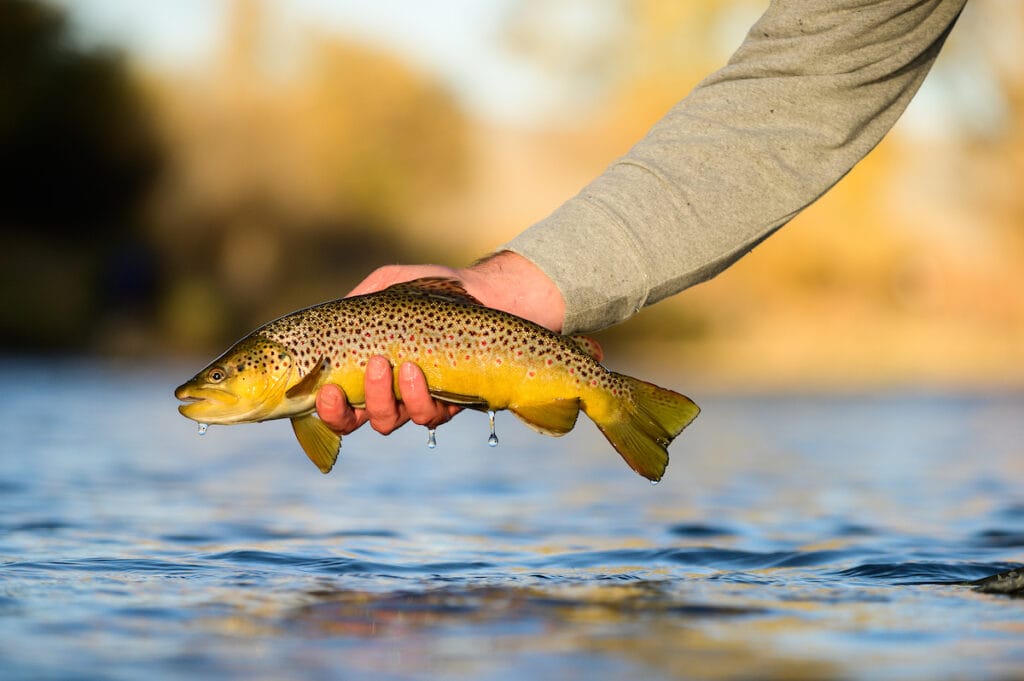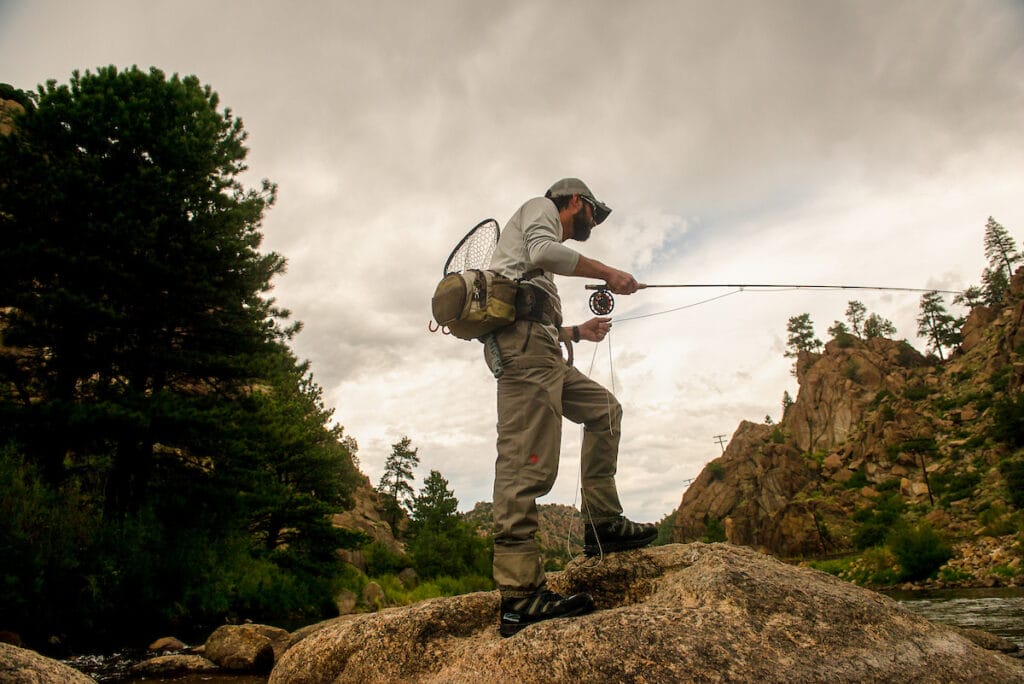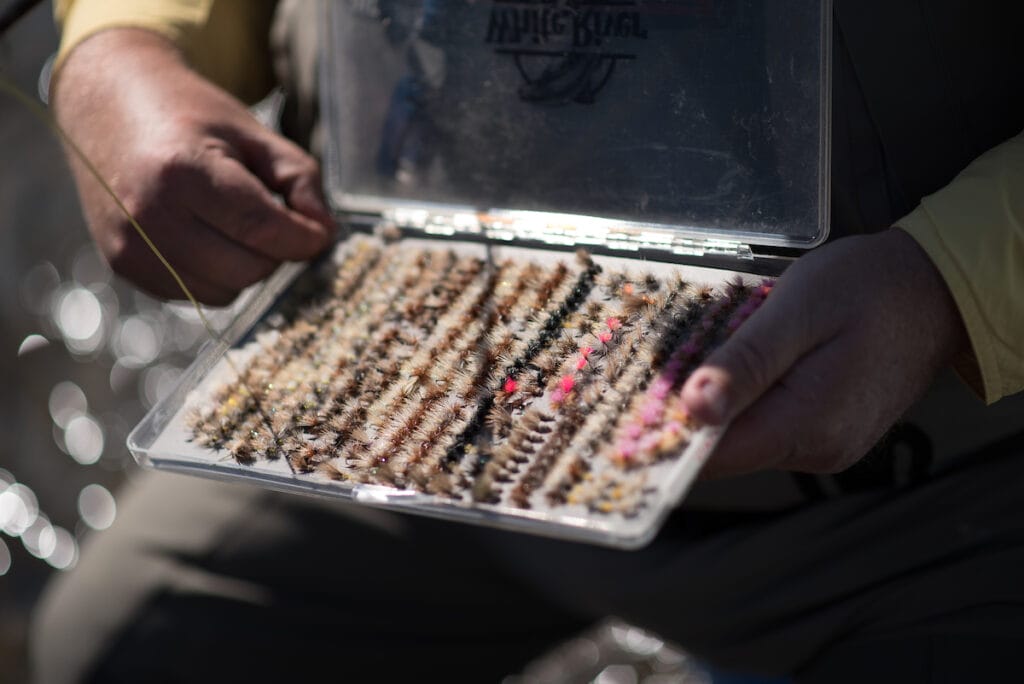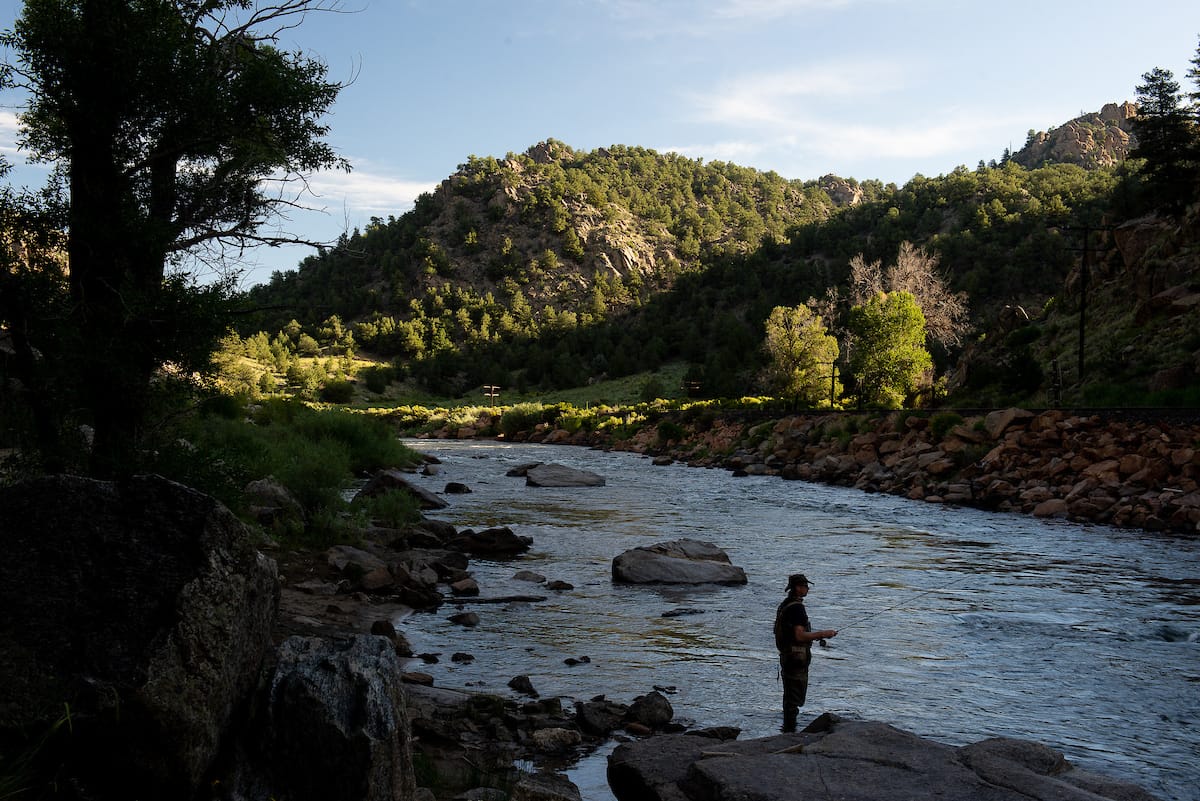My favorite quote of all time is by Will Rogers: “Even if you’re on the right track, you’ll get run over if you just sit there.”
I think that applies to many things in life, even trout fishing.
When I program myself to fish the same way—use the same flies, the same rig, the same cast, and fish in the same places, over and over and over—that takes the intrigue and excitement out of the game and I get bored.
Don’t get me wrong, there’s something to be said for relying on a good ‘ol recipe for success. It’s just that “success” for me is becoming less and less about how many fish I catch—which, admittedly, has been the standard for judging the fishing experience since the dawn of time—and more about figuring stuff out.

I like improvising more than playing the same old practice scales. I like swinging for the fence now and then. As I’ve said before, I’d rather try something new and fail than get stuck in a rut, even if that means the fish win that day.
And believe it or not, sometimes this old dog does learn some new tricks, just by trying new things.
For example, I absolutely love fishing with streamer flies. After all, streamers elicit a predatory response, particularly when trout fishing. Streamers are what flip the instinct switch among those meek and mild bug sippers, turning them into hunters.
Over the years, however, I’d been preconditioned to fish streamers a certain way—mainly casting them toward the bank (at about a 45-degree downstream angle) stripping the line and hoping for a reactive strike.
I had heard about those who profess the “upstream streamer” technique. My friend Henry Koltz from Wisconsin, among others, has long advocated that if you cast a streamer fly—particularly a smaller size one—upstream and “jig” it down a run, it will yield bites.

So, I started dabbling in that several years ago, and it’s pretty interesting. It can also be effective, especially around this time of the year. Last weekend, I watched my son hook and land a beautiful rainbow under a bridge after a tricky upstream, sidearm cast with a streamer. I suppose the upstream-to-downstream streamer-jig presentation imitates many possibilities—a wounded baitfish, a leech or a worm, a glob of whatever.
I also suppose that’s why I’ve long felt that the number-one, most versatile fly in the history of the world is a Muddler Minnow.
Why? Because a Muddler can look like so many things—a sculpin or other small fish… grease it up and it floats like a grasshopper… fish it like a nymph fly and it’s a drowned grasshopper, and so on. With a trimmed deer hair bullet-shaped head, it creates a disturbance and bubbles when it’s stripped through the water, so it’s a pretty good “agitator” as well.
Anyone can get creative and make other flies do different things, too. Carry a Sharpie pen with you if you want to turn a PMD into a BWO (that’s pale morning dun into a blue-winged olive), and some small scissors can give a haircut to any dry fly to change it from a dun to a spinner.
My friend Daniel Hackett from Australia told me once that sometimes, when the “blanket hatch” is on and there are many bugs on the water, it’s a good idea to “un-match the hatch” by having your fly look just a bit different, so it’s the standout that gets bit.

As a guy who writes books and stories in magazines, it almost pains me to say this but here goes:
You can read all the books, and magazine stories on fly fishing… watch all the videos you can, hire guides, take classes, go to shows and seminars, and all that stuff. That’s super helpful and great, but at the end of the day, the best teachers of fishing you will ever find are…
The river. And the fish. And yourself.



